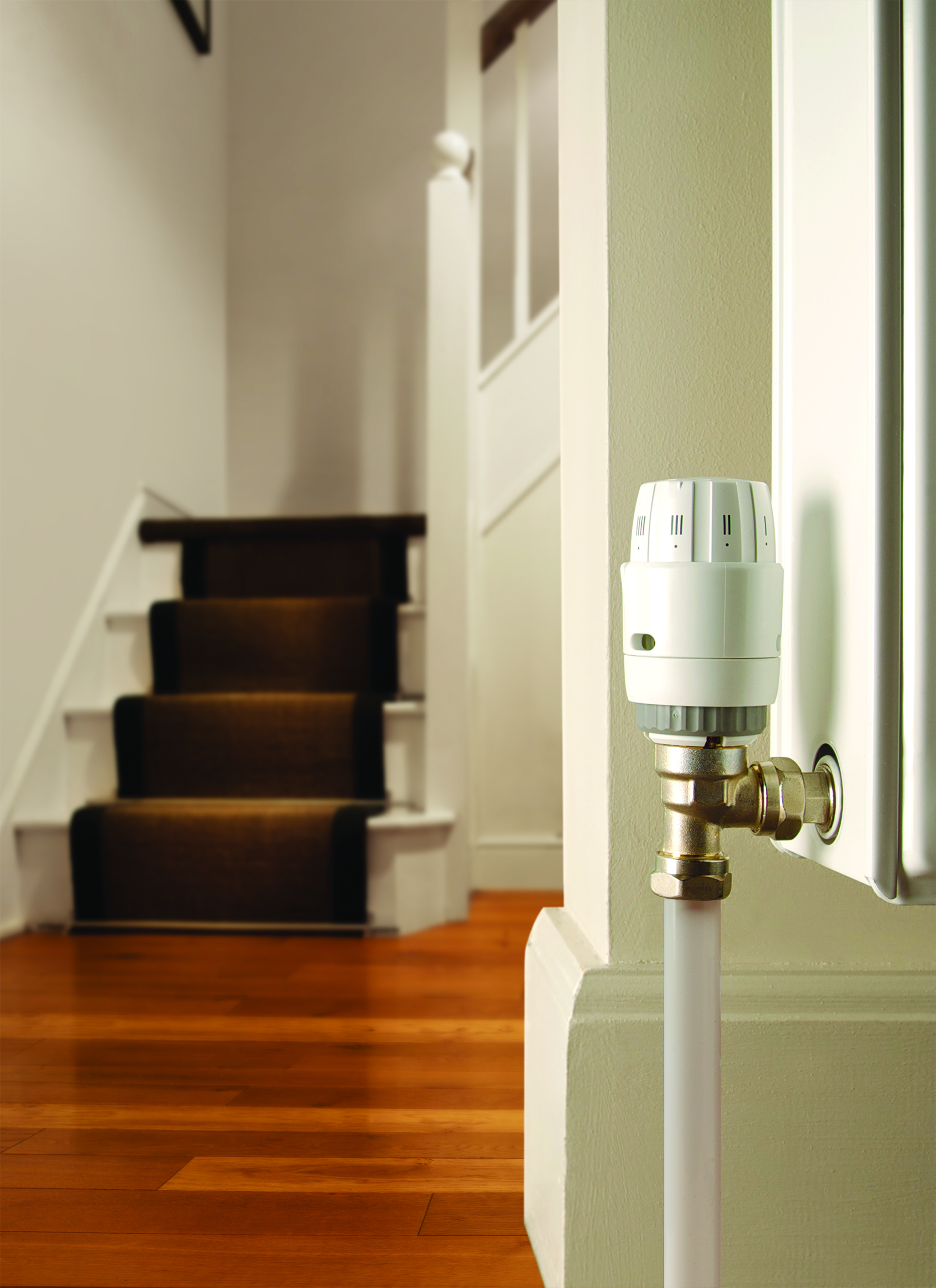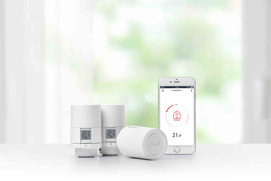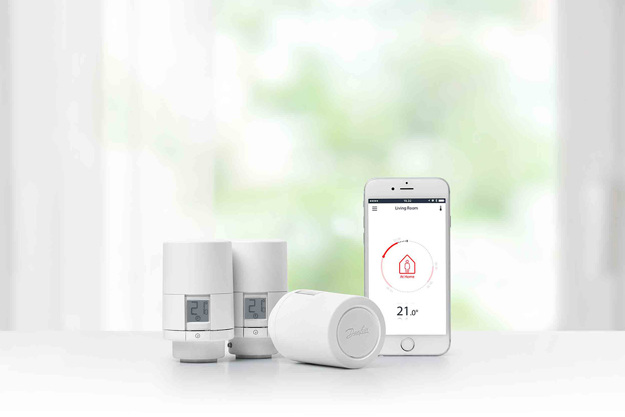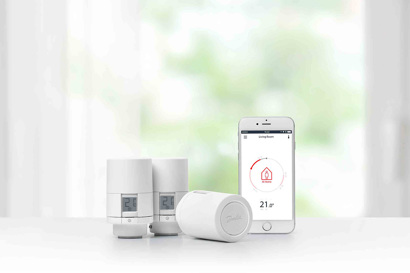At 230 years old - it’s an energy efficient marvel
"living by Danfoss" digital thermostats helped transform the U.S. Ambassador’s residence in Brussels.
One of the world’s first installations of living by Danfoss digital thermostats helped transform the U.S. Ambassador’s residence in Brussels into a showcase of energy efficiency.
Location: Brussels, Belgium
Project: Reduction of 23 % in heating consumption
Application: Replacement of old thermostats with living by Danfoss thermostats
''The intention with the project was not only to reduce the residence’s energy costs but also to make it more comfortable and really demonstrate the results obtained when we unleash the power of energy efficiency into our existing stock of homes and buildings''. - Kateri Callahan, ASE’s President 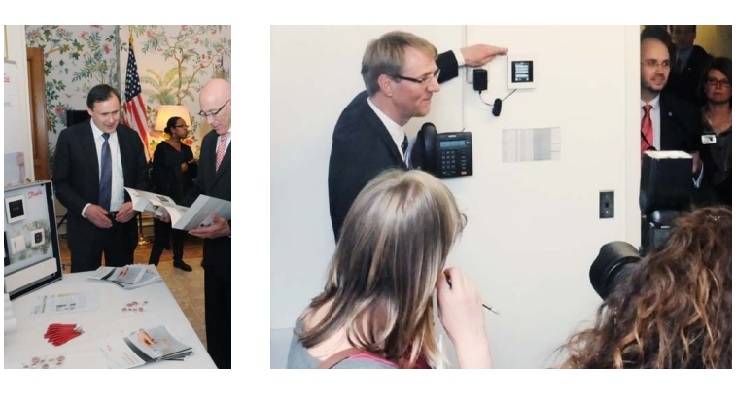
In the heart of Brussels, the 230-year-old residence of the U.S. Ambassador to Belgium is both stately and historic – and thanks in part to Danfoss it is now far more energy efficient.
Following a top-to-bottom renovation over the course of eight short weeks in early 2011, the residence has become a showcase for the latest technologies in home energy efficiency, including wirelessly-controlled living by Danfoss digital radiator thermostats and Danfoss Link Central Control touchscreens.
“While the residence may look like a home rooted in history,” says U.S. Ambassador Howard Gutman, “it actually represents our energy future. That future boasts publicprivate partnerships, a comprehensive strategy incorporating appliance efficiency standards, the federal government leading by example in energy efficiency and both yesterday’s and tomorrow’s homes being more energy efficient.”
Studies show a reduction of 23% in heating consumption by replacing old thermostats with living by Danfoss thermostats, which is part of the reason why the ambassador’s residence was one of the very first in Europe to be equipped with a living by Danfoss system.
The renovation project was undertaken in conjunction with the Energy Efficiency Global Forum, an annual conference held by the Washington D.C.-based Alliance to Save Energy. The ASE was looking for a project to demonstrate how older housing stock could be modernised and become more energy efficient, according to Kateri Callahan, ASE’s President.
''The intention with the project was not only reduce the residence’s energy costs but also make it more comfortable and really demonstrate the changes that result when we unleash the power of energy efficiency into our existing stock of homes and buildings,” says Callahan.
Transforming a 1,496 m2 home (16,097 sq ft) into a modern energy marvel without compromising its historic architecture or décor is no small endeavor. Especially when the project involves several large companies, new technology and only eight weeks.
“The scale of the installation was big,” says Erwin Debutte, Sales Manager for Danfoss in Belgium. “But the challenges put to our system are very comparable to any other home renovation and the time for us to actually assess, install and train the staff in how to use the system took just a few days.”
In order to help complete the energy facelift, Danfoss installed 30 new living connect® radiator thermostats on the old castiron radiators in the residence in both the ambassador’s quarters and in some of the common working areas like the kitchen. Each of the living connect® thermostats are enhanced with wireless Z-Wave technology, which makes it possible for them to communicate with a wall-mounted touchscreen controller in the residence, called a Danfoss Link Central Control. This wireless capability meant a quicker installation could be done without having to drill holes or pull cables in the historic building.
The Danfoss Link also makes it possible to control or program all radiators so they are optimized for relaxing, sleeping, or concentrating on work or studies in the ambassador’s quarters. An additional Danfoss Link unit controls all of the thermostats in the working areas, allowing, among other things, for heat to be minimized after working hours.
“There are a number of standard technical features like open window functionality on the living connect® thermostats in the residence. This will allow the ambassador’s staff to open windows for ventilation in places like the kitchen, for instance, without the risk of wasting heating energy,” says Danfoss Category Manager Morten Bang Jørgensen. “This is because the thermostats are smart enough to turn themselves on and off when they detect a window is open.”
Debutte says the biggest challenges were the combination of floor and radiator heating systems and fireproof walls and doors between the rooms in the residence. Danfoss installers had to calculate the precise need for wireless signal repeaters in order for the connections between radiator thermostats and touchscreen controllers to work flawlessly
“Those are fairly modern challenges for a heating system, no matter how old the home is,” he says.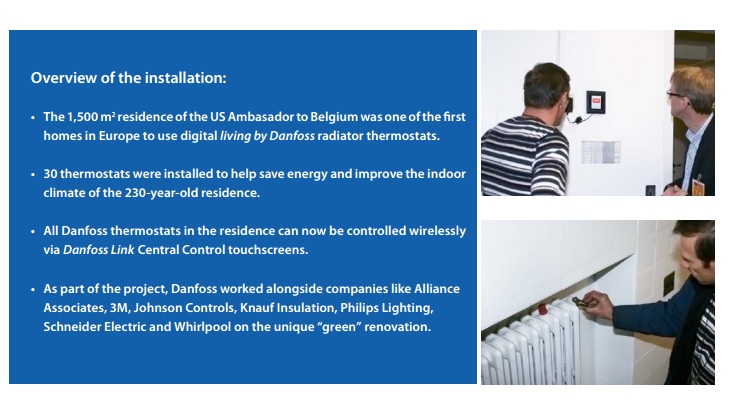
A unique challenge and an unexpected solution
The ability to wirelessly control radiator thermostats also proved to have some unexpected benefits during the renovation. Inside the residence, a large ballroom is used for receptions and entertaining. The ballroom uses separate heating and ventilation systems that were installed separately over the years. The radiators for the ballroom are located under the floors behind large metal grates that are extremely difficult to remove.
“This meant that a simple adjustment of the radiator thermostats previously required large amounts of time and effort and, consequently, it was never done. In the warm months the heat just kept blaring away while the cooling system worked against it.” says Jørgensen. Fixing this challenge previously would have required demolition of walls and remodeling of the home. “We were able to put a living connect® thermostat on the radiators and now the difficult access is no longer an issue thanks to the ability to adjust the temperature wirelessly,” says Jørgensen. “The amount of time, money and effort saved was significant and the fact that the ambassador’s staff avoided having to redesign the systems or tear down walls saved them significant amounts of money.”
Related products
-
if (isSmallPicture) {


 Radiator thermostats
Radiator thermostatsDanfoss radiator thermostats maintain constant desired room temperatures, individually room by room and help to reduce energy consumption.
-
if (isSmallPicture) {


 Electronic radiator thermostats
Electronic radiator thermostatsElectronic radiator thermostat Danfoss Eco™ is the stand-alone smart radiator thermostat that gives you in-home control of your radiator heating.
-
if (isSmallPicture) {


 Radiator valves and thermostatic radiator valves
Radiator valves and thermostatic radiator valvesRobustly built and designed to meet the rigors of the commercial and industrial sectors, a comprehensive range of Danfoss radiator valves is available for practically all systems and installation conditions.



